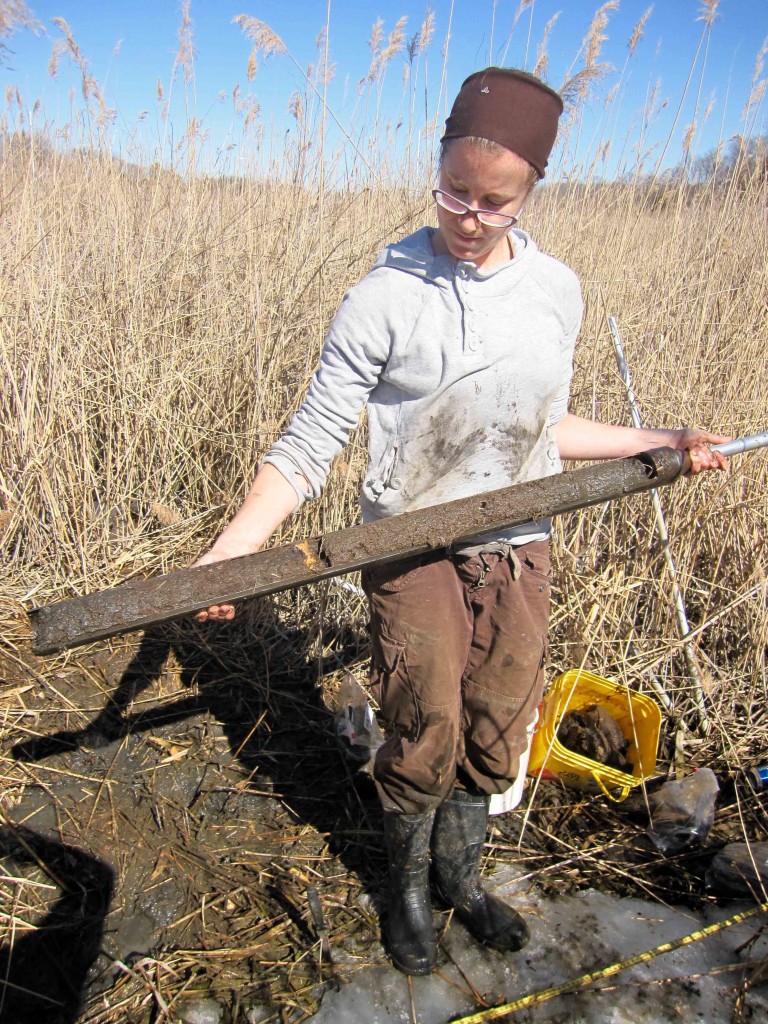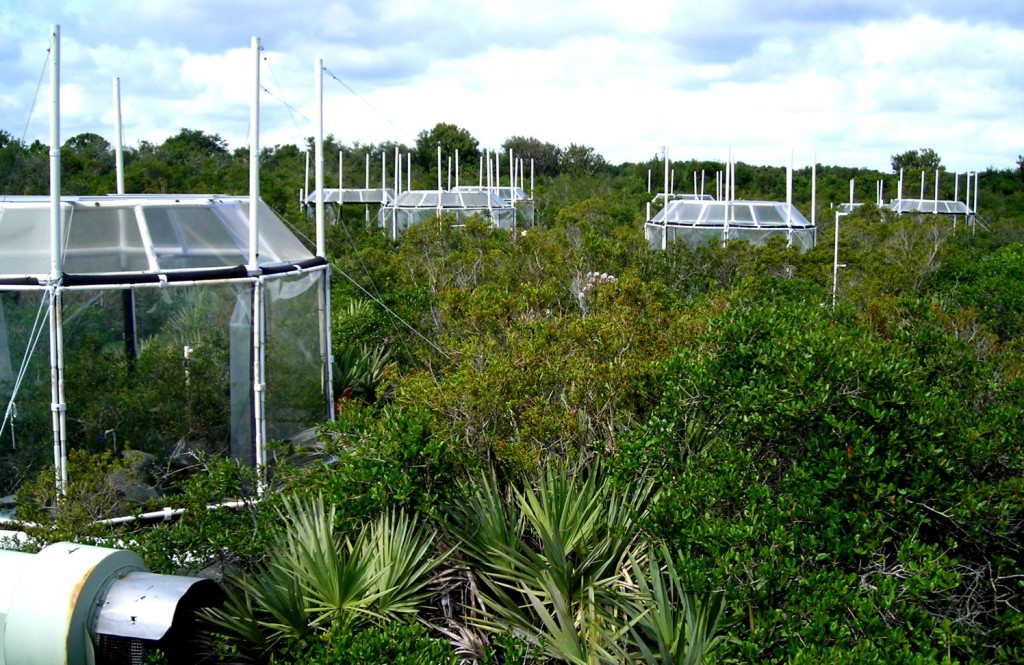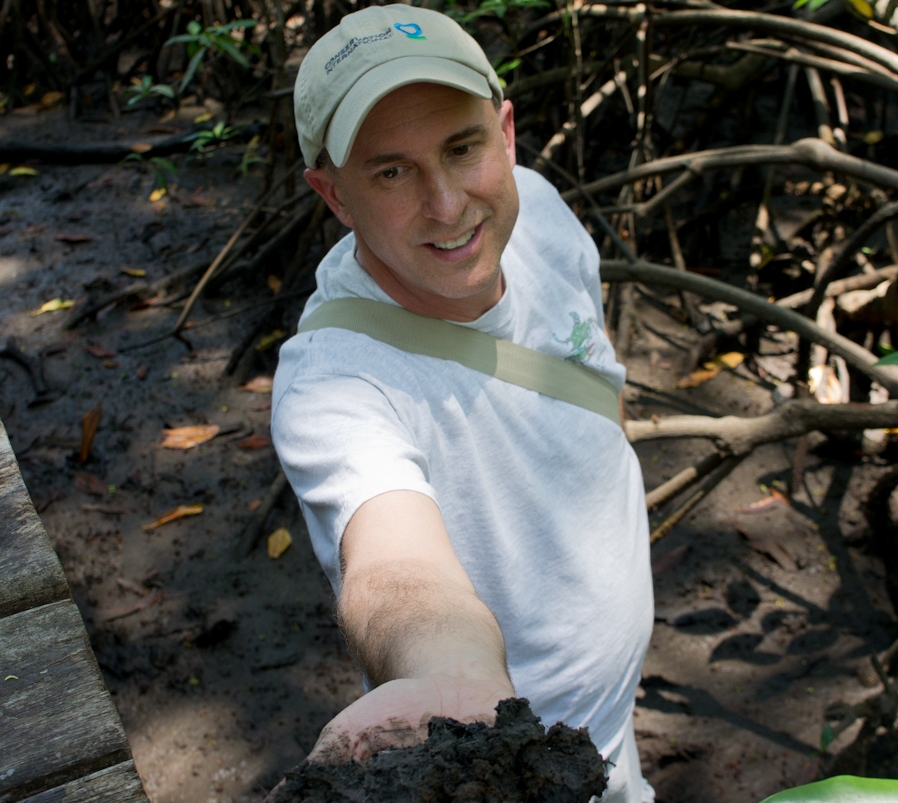by Kristen Minogue

Blanca Bernal extracts a soil core from a SERC marsh. (Credit: SERC)
Just beneath our feet, there’s a slumbering pool of carbon that has largely been ignored.
Earth’s deep soils store vast reservoirs of carbon centuries to millennia old. Left undisturbed, they can store that carbon for thousands of years longer. But if triggered, those reservoirs could release carbon dioxide (CO2) into the atmosphere, a team of scientists discovered in a new study from the Smithsonian Environmental Research Center.
Soils contain an estimated 2500 gigatonnes of carbon, more than the atmosphere and all Earth’s organisms combined. That makes soil the third largest carbon pool on the planet, behind only the ocean and fossil fuels like coal and oil. But deep soils (anything 3 feet underground or lower) have attracted very little attention. Soils only release carbon by decomposing—and deeper soils are much tougher for microbes to break down.
“Usually the deeper the carbon is, the harder to decompose it is because it has been there longer,” said Blanca Bernal, lead author of the new study published in the July issue of Soil Biology and Biochemistry. That’s because microbes, like many more intelligent life forms, prefer the path of least resistance. They break down the easy material first and leave the harder, more resistant soil carbon behind. Over time, the easily degraded soil carbon gets whittled away until only the tougher carbon remains.
But that can change with just a small burst of energy. And climate change could provide the jolt that microbes need.
As CO2 rises, plants grow larger and faster, stretching their roots deeper into the soil. So far most scientists have welcomed this as good news (after all, bigger plants store more carbon). But the intrusion wakes up the deep-soil microbes, setting off a flurry of decomposition that turns soil carbon into CO2 that goes straight to the atmosphere.

The team took soil samples from this scrub oak forest in the Merritt Island National Wildlife Refuge in Florida. The pods are experimental chambers, where scientists pump extra CO2 to simulate future climate change. (Credit: Smithsonian)
Bernal works as a postdoc at the Smithsonian Environmental Research Center (SERC), in Edgewater, Md. But for this study, Bernal, SERC senior scientist Pat Megonigal and their colleagues went to a scrub oak forest in Florida, in the Merritt Island National Wildlife Refuge. Megonigal and other scientists there had already discovered giving microbes on the surface more food would trigger them to emit more CO2. Bernal and fellow SERC postdoc Duncan McKinley wanted to find out if the same would hold true for deep soils, where the carbon is—supposedly—much harder to break down. Until now, most deep soil studies were limited to predictions through modeling. Few had actually attempted to measure what goes on down there.

SERC senior scientist and biogeochemist Pat Megonigal holds up soil from a marsh in Costa Rica. Soil stores more carbon than the atmosphere and biosphere combined. (SERC)
The team took soil cores from the forest back to the lab, where they tested soils from the surface, 1 meter down and 3 meters down. Except for six untreated controls, each sample received one of three compounds: glucose (a carbon-rich sugar), alanine (an amino acid rich in carbon and nitrogen), and dead plant material—all substances that roots could inject deeper into the soil as climate change moves forward. After two months, they tracked how much CO2 each sample emitted.
Left undisturbed, surface soils turned 23 percent of their soil carbon into CO2, and the buried soils a paltry 2 and 3 percent. But adding new material changed the picture. Alanine, the most powerful of the three substances, triggered the deepest soils to churn out 16 percent of their soil carbon as CO2. Suddenly, researchers detected a flood of microbial activity in the deep soils where they’d detected none before.
“It’s not that they are dead. They are just dormant,” Bernal said of the microbes. Alone, microbes lack the energy to break down the more stubborn forms of carbon. But alanine and other compounds are like food for microbes. In the case of this study, “it just took a little bit of food for the microbes to be able to decompose that carbon. And that shows that the carbon is not really impossible to degrade.”
In the end, the discovery suggests it’s not about how easy or tough deep-soil carbon is to break down. It’s about the sleeping microbes, and whether conditions are right to wake them up.
“I think that we are underestimating the deep carbon pools,” Bernal said. “They can be very active any time.”

